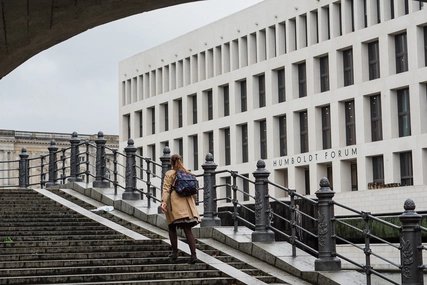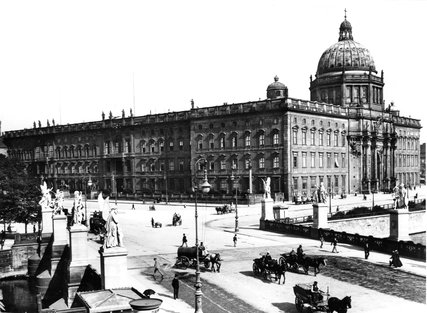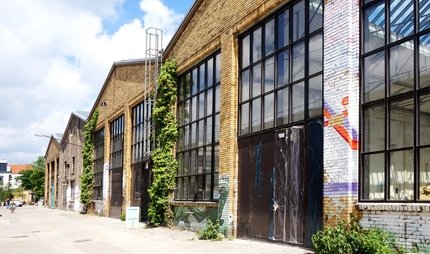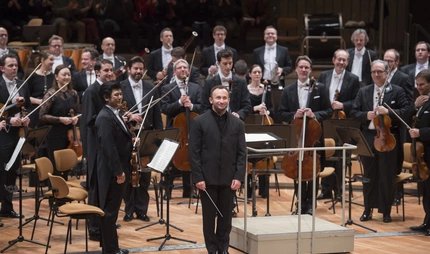
It was not long ago that the big “palace building site” stood in Berlin, and many citizens voiced their criticism. But did you know that almost 600 years ago, Berliners protested against another palace construction site here? And they didn't hold back!
The new Humboldt Forum: a bustling place even 600 years ago
The Humboldt Forum, the new forum for science, art and culture opens its doors – at first digitally – on 16 December following a long construction period. However, very few people are aware that a major construction site once stood here way back in the 15th century which caused considerable displeasure among Berliners.
Berliners' explode with rage
On one particular day in the spring of 1448, unusual events took place in the heart of medieval Berlin.
On the site where the new Humboldt Forum now rises up into the sky by the Spree, the unpopular Elector Frederick II was building his first palace – right in the heart of the city. From there, he hoped to be able to better control the freedom-loving and recalcitrant Berliners and thereby send a clear signal of power. Of course, all this was completely against the will of the people, who had been fighting against his claim to power for years. The Berliners had absolutely no intention of putting themselves under the yoke and becoming a royal seat of power ruled by a prince.
Just moments before, bricklayers and craftsmen had been grafting away on the palace construction site – but all of a sudden they had to run for their lives. They were fleeing from the unleashed masses of water from the Spree, which in the blink of an eye poured over pits, piles of wood and sand, washing over the site and sweeping away everything in its path. A short distance away, a large number of Berliners were celebrating their cunning action triumphantly. Armed with picks and axes, they had given vent to all their displeasure by hammering down the dam to the Spree and thus turning the construction pit into a lake. Where a splendid palace was supposed to rise into the sky, mud was now spread far and wide. The dam, whose purpose was to protect the construction site from flooding, especially in spring when the snow melted, proved easy to break.
The end of the story
The end of the story is well-known: After many more violent confrontations, the Elector finally got the upper hand. On 18 June the citizens had to concede and agree to what is known as the mussbrieff, or letter of obligation. The palace was famously built on exactly the same spot and the eventful 500-year reign of the Hohenzollern family in Berlin began.

Even if the city of Berlin's good and bad times were to remain bound to the rise and crises of the Hohenzollern family for some 500 years, this early day of turmoil, when the people's anger was unleashed against the Elector's growing claim to power, was not forgotten. The period of resistance went down in the city's history as the “Berlin Unwill”.
By the way
- In 1931, during demolition work near the monastery church, an impressive brick Gothic pointed arch portal was recovered. It is the last surviving evidence of the former “Hohes Haus”, the residence of the Elector of Berlin at that time. During the times of rebellion, angry citizens piled into the elector's stately rooms through this portal, beat up the elector's officials and proceeded to ransack the interior. Today this portal can be seen in the Märkisches Museum.
- We can no longer say exactly what the first city palace in Berlin looked like, which Elector Frederick II imposed on the population of medieval Berlin. In all likelihood it was a two-wing brick building in the style of the modern late Gothic pointed arches of that time. Its archaeological remains were destroyed during the construction of the Palace of the Republic under GDR leadership.
- The new Humboldt Forum on the site will open digitally in mid-December and provide online insights into the exhibitions.
- You can download more exciting stories from Berlin's past free of charge on our About Berlin app.





